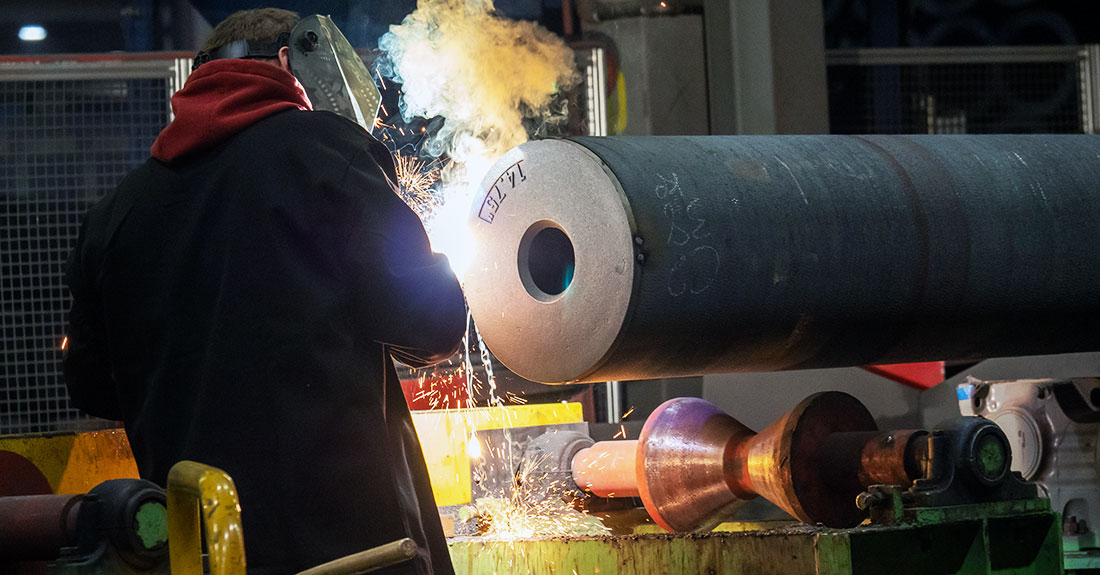What is Ductile Iron?
A groundbreaking alternative to conventional utility poles.
There are several benefits of ductile iron pipes for utility companies, based on location and need. If you're unhappy with the consistency of wood poles, but can't justify the cost of steel or concrete, McWane Ductile Iron Poles are the perfect solution. See how our durable, eco-friendly poles are a groundbreaking alternative to conventional transmission & distribution poles.

Advantages of Ductile Iron Pipes:
Consistent Strength
Unlike wood poles, McWane Ductile Iron Poles are engineered with a minimum yield strength of 42 ksi, ultimate yield strength of 60 ksi, modulus of elasticity of 24,000ksi and a minimum percentage of elongation of 10%.
Durability
McWane Ductile Iron Poles have a service life of 75+ years, outlasting both steel and wood.
Low Maintenance
Ductile iron poles give you one less thing to worry about. Because of its strength and composition, ductile iron is highly resistant to wind, storms, and heat from wildfires, as well as completely resistant to rot, insects, freezing weather, and woodpeckers. Maintenance and upkeep is minimal to none.
Environmental Impact
Ductile iron poles are made from 96% recycled material and are 100% recyclable. Unlike wood poles, which are frequently treated with pentachlorophenol and can leach into the ground water and affect public safety, McWane’s ceramic-epoxy embedment coating and ductile iron material are certified by the National Sanitation Foundation (NSF) to be safe for use in contact with potable water sources. Ductile iron poles also weigh less than wood poles and are much lighter than concrete, requiring less energy and fuel to transport and reducing carbon emissions. Further, our Environmental, Health, and Safety (EHS) management system allows us to manufacture our products in an environmentally-compliant and eco-friendly way and provide communities with a foundation for life with clean, safe, and dependable drinking water.
Life Cycle Costs
The strength, durability, and highly resistant properties of ductile iron gives our poles an expected service life of more than 75 years. Ductile iron has a service life comparable to steel, and twice as long as wood. And because ductile iron is corrosion-resistant, unlike weather steel, and has a low-maintenance requirement, McWane Poles have a lower life-cycle cost than steel or concrete alternatives.
Simple Installation
Installation is as easy as it gets. Ductile iron poles can be pre-drilled, or if you prefer to drill yourself, it’s easy to do so. Many poles can be shipped fully assembled and others in just two pieces. The round, tapered design simplifies orientation for installers, and installation uses most of the same equipment as wood poles, so you don’t need to purchase extra tools. McWane Poles can be assembled by hand with chain hoists, making them easy to install without heavy machinery.
Consistent Appearance
McWane Poles are manufactured by centrifugal casting, resulting in highly consistent strength and dimensional control. When a load is added to wood poles, it will turn, twist and shrink, causing frequent adjustments of any hardware or equipment mounted to the pole. Ductile iron, on the other hand, will not twist or shrink, making mounting equipment exceedingly easy and consistent. The consistent appearance of McWane Poles also make them the ideal solution in residential areas, where they can be matched to existing aesthetics and design.
Quality Control
Our manufacturing facility is ISO 9000 certified for quality management, and we employ multiple controls throughout the process. From the initial point melting of the iron to shipping the final product, our quality control team performs 23 quality checks on every pole, including spectrometer tests, casting thickness ultrasounds, Permasafe wet gauge inspection and more. We ensure that you will experience the full advantages of ductile iron pipes.
Advanced Metallurgy
Because of ductile iron’s advanced metallurgy, it has the physical strength of steel with the corrosion resistance of cast iron. But unlike cast iron, which is brittle, the added magnesium in ductile iron allows it to bend instead of snapping under pressure. For a closer look at the unique properties of cast iron and ductile iron, see The Science of Ductile Iron below.
[Explore all of our ductile iron pole products.]
Ideal in These Applications and More
- 69kV
- Line Hardening
- Un-Guyed Angles
- Equipment Poles
- 161 kV H-Frame
- 115 kV
- Switch Poles
- Coastal Environments
- Un-Guyed Tap Poles
The Science of Ductile Iron
Ductile iron is produced by adding magnesium alloy to a molten iron of low phosphorous and low sulfur content. The magnesium alloy addition produces a remarkable change in the microstructure by causing the carbon in the iron to assume a spheroidal or nodular shape, compared to the flake form of graphite in gray cast iron, and at the same time producing a finer grained iron matrix in the surrounding ferrite structure. As a result of this remarkable change, a far stronger, tougher, and ductile material is obtained.
[Diagram from current website]
History of Ductile Iron
In the past 400 years, cast iron has been used in every conceivable situation where strength and corrosion resistance were needed. From manhole covers to fire hydrants, water pipe, sewer pipe, bridges, and buildings, cast iron has weathered the elements and has survived the test of time. The oldest operating cast iron water main is in Versailles, France, and was installed in 1664. In North America alone, there are more than 500 municipalities with cast iron pipes that have been in service for more than 100 years. With hundreds of years of underground and above ground service, cast iron is well-known for its longevity and durability.
Ductile iron, which was first used in the 1960s, continues this excellent record of underground and above ground service. Ductile iron is only different from cast iron in its ability to bend without breaking. Ductile iron contains the same ingredients as cast iron. The difference is not the quantity of carbon, but the configuration of the carbon molecules. In cast iron, carbon is in flake form, while in ductile iron, the carbon is in nodular form.

